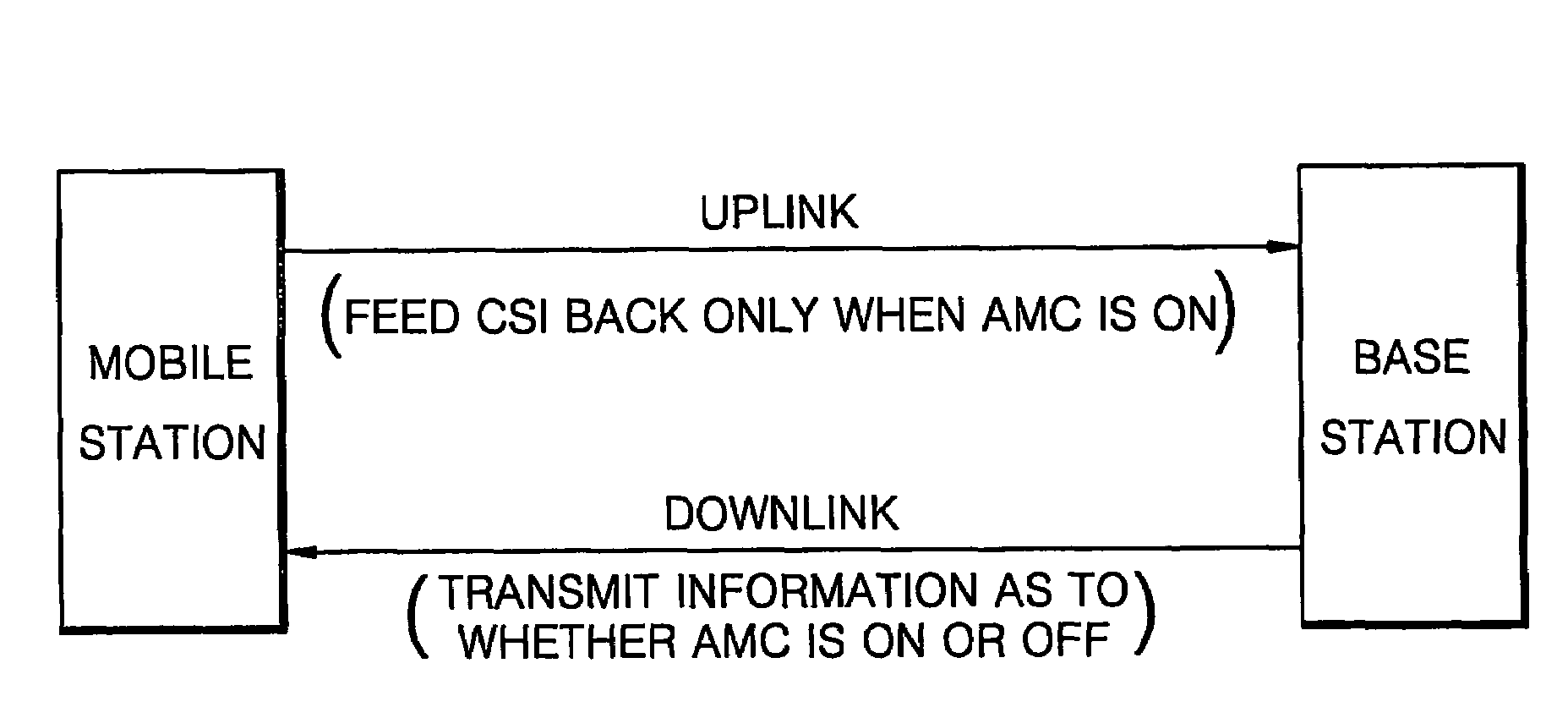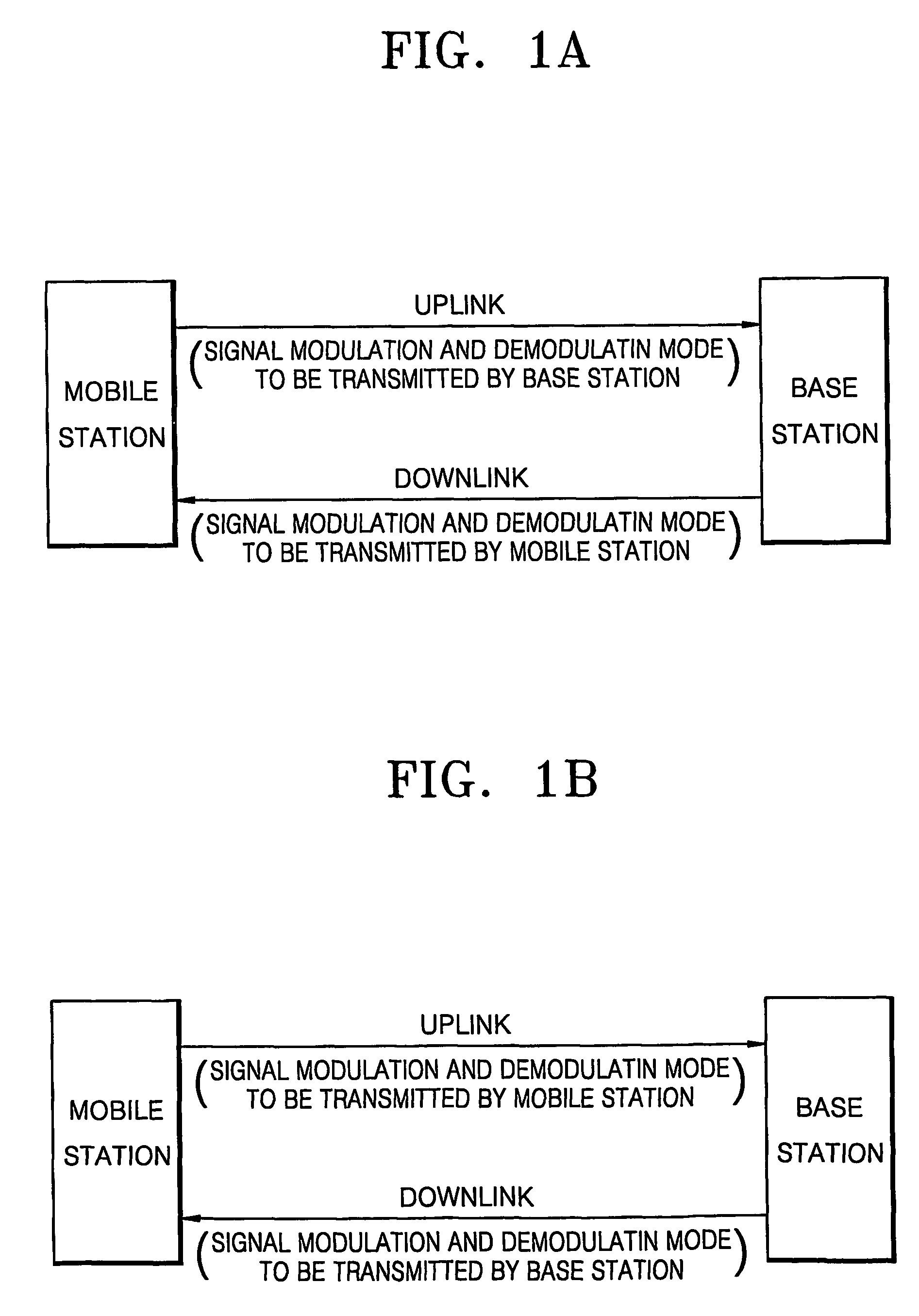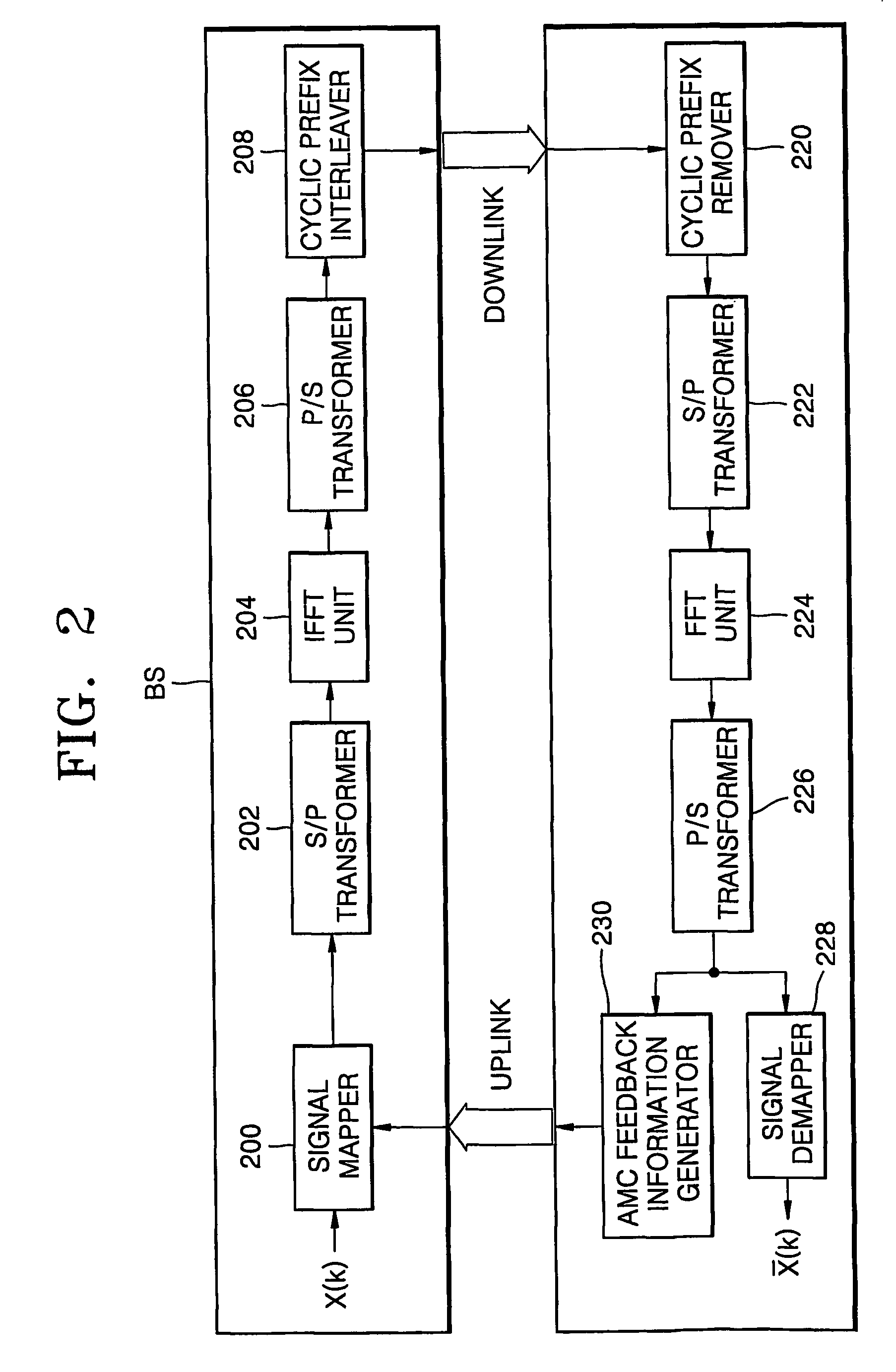Method of reducing feedback channel state information within adaptive OFDMA system and adaptive OFDMA system using the same
a feedback channel and state information technology, applied in the field of adaptive orthogonal frequency division multiple access (ofdma), can solve the problems of deteriorating communication performance, serious frequency selective fading, waste of wireless channel resources, etc., and achieve the effect of reducing feedback csi
- Summary
- Abstract
- Description
- Claims
- Application Information
AI Technical Summary
Benefits of technology
Problems solved by technology
Method used
Image
Examples
Embodiment Construction
[0028]FIG. 1A is a block diagram for explaining a scenario of adaptive modulation and demodulation when an FDD is used, and FIG. 1B is a block diagram for explaining a scenario of adaptive modulation and demodulation when a TDD is used.
[0029]Referring to FIGS. 1A and 1B, an MS measures the state of data downlink and requests a transmitter of a base station (BS) to transmit data in a transmission mode according to the state of downlink. The BS measures the state of uplink and requests a transmitter of the MS to transmit data in a transmission mode according to the state of uplink.
[0030]As shown in FIG. 1A, when the FDD is used, an uplink is used for signaling a modulation and demodulation mode to be used for a transmission by the BS, and a downlink is used for signaling a modulation and demodulation mode to be used for a transmission by the MS.
[0031]Referring to FIG. 1B, when the TDD is used, the uplink is used for signaling a modulation and demodulation mode to be used for a transmi...
PUM
 Login to View More
Login to View More Abstract
Description
Claims
Application Information
 Login to View More
Login to View More - R&D
- Intellectual Property
- Life Sciences
- Materials
- Tech Scout
- Unparalleled Data Quality
- Higher Quality Content
- 60% Fewer Hallucinations
Browse by: Latest US Patents, China's latest patents, Technical Efficacy Thesaurus, Application Domain, Technology Topic, Popular Technical Reports.
© 2025 PatSnap. All rights reserved.Legal|Privacy policy|Modern Slavery Act Transparency Statement|Sitemap|About US| Contact US: help@patsnap.com



